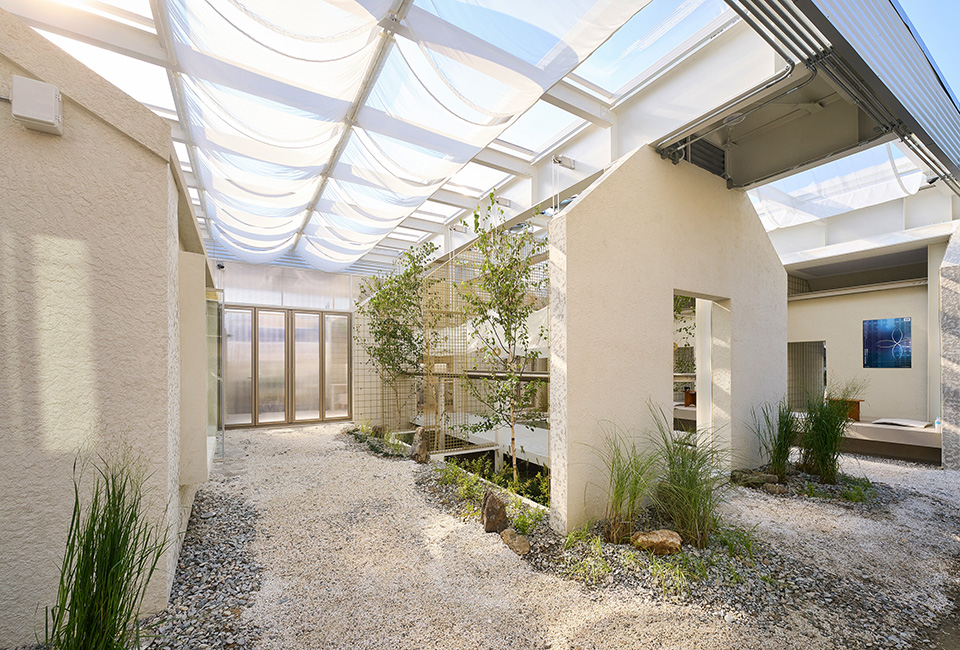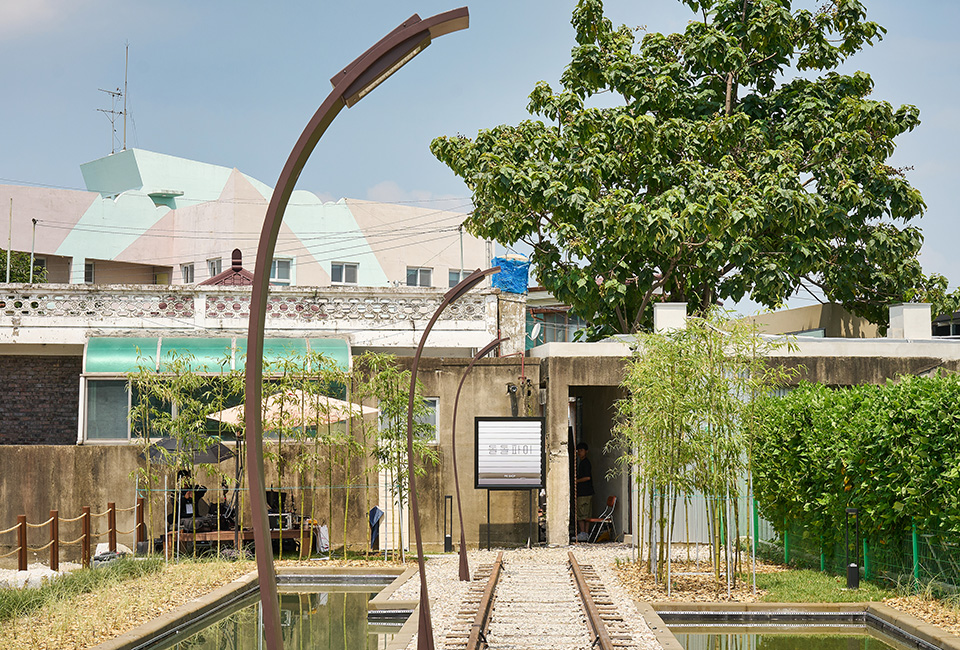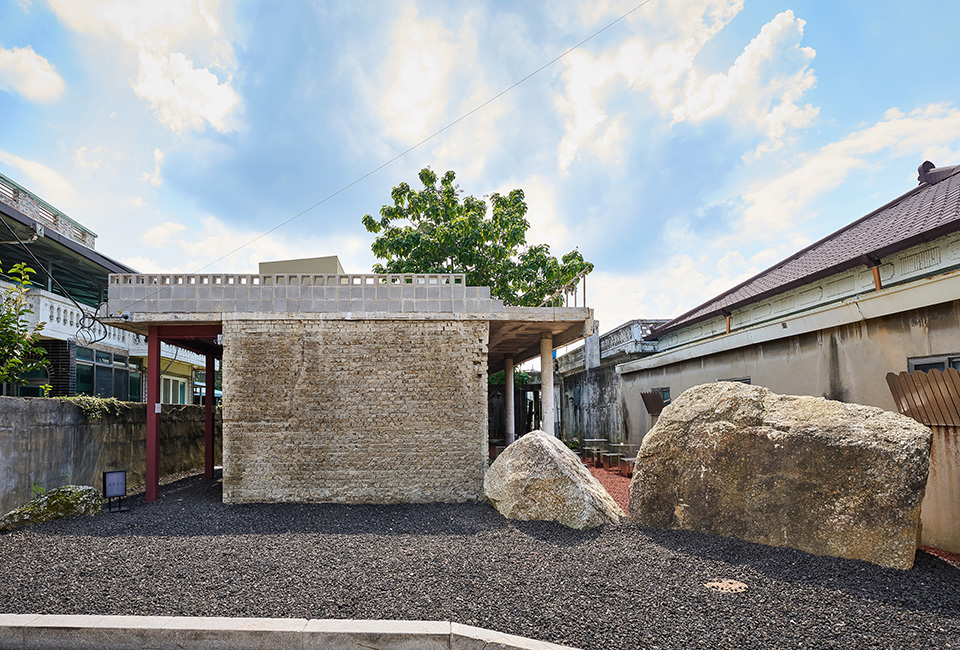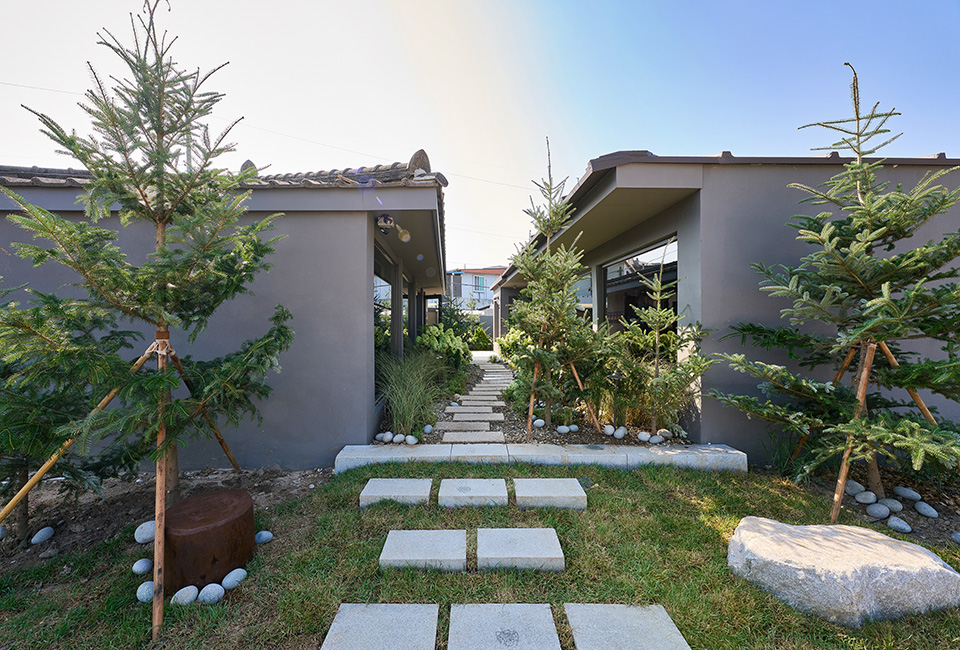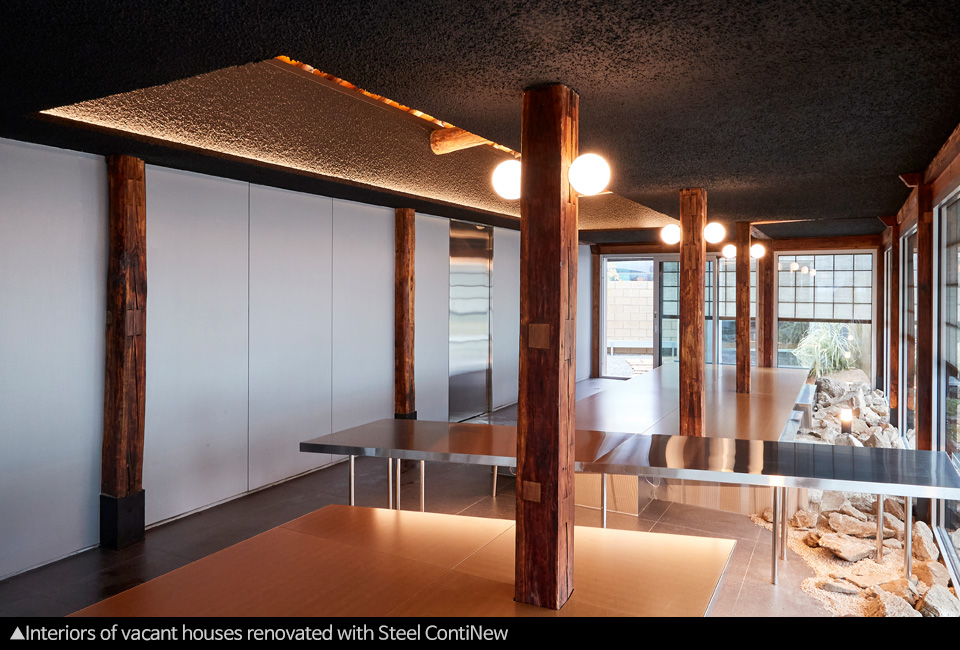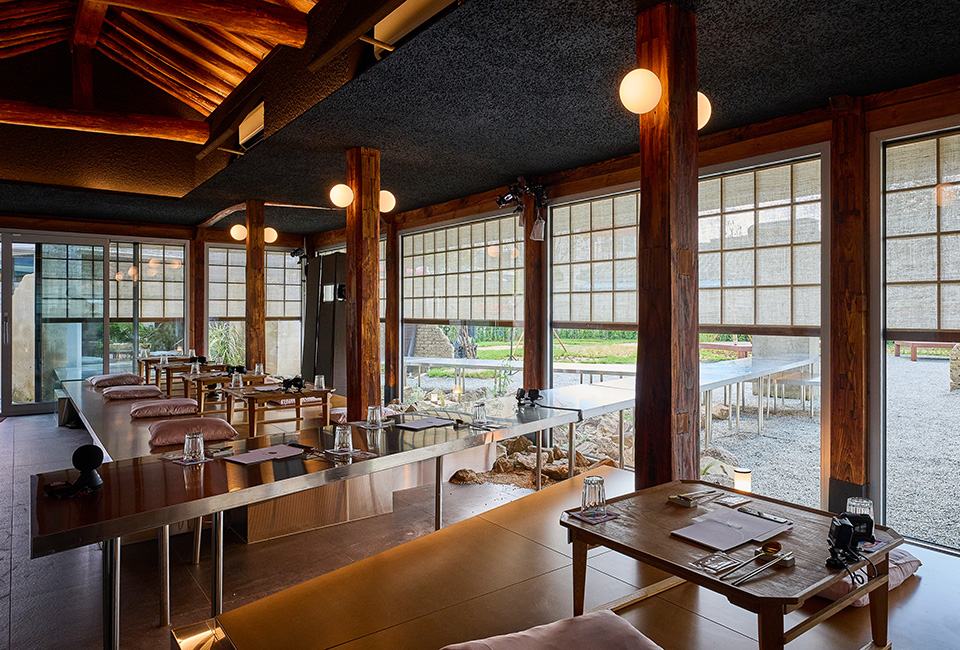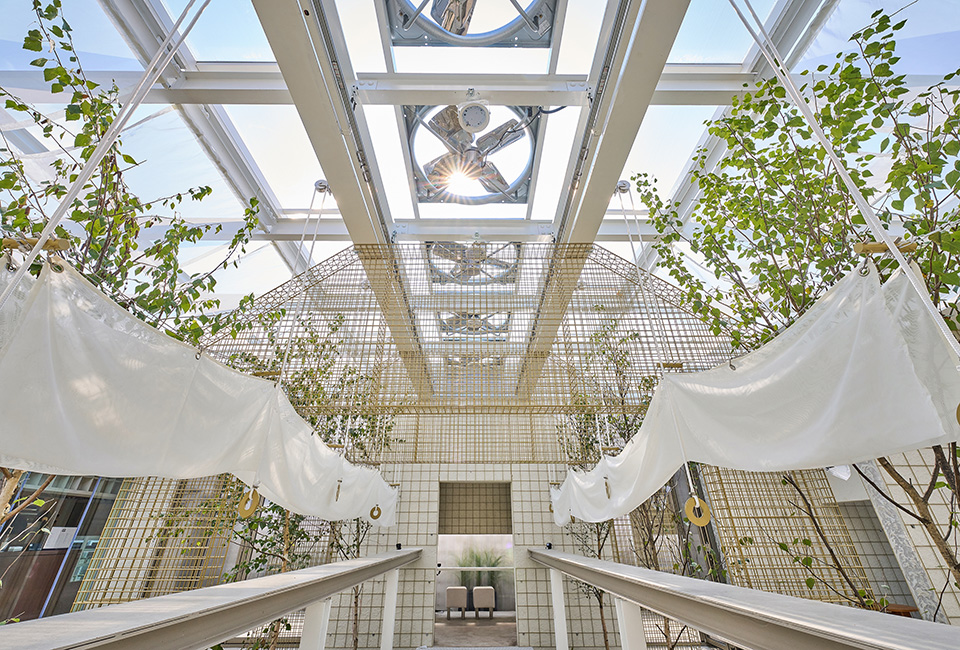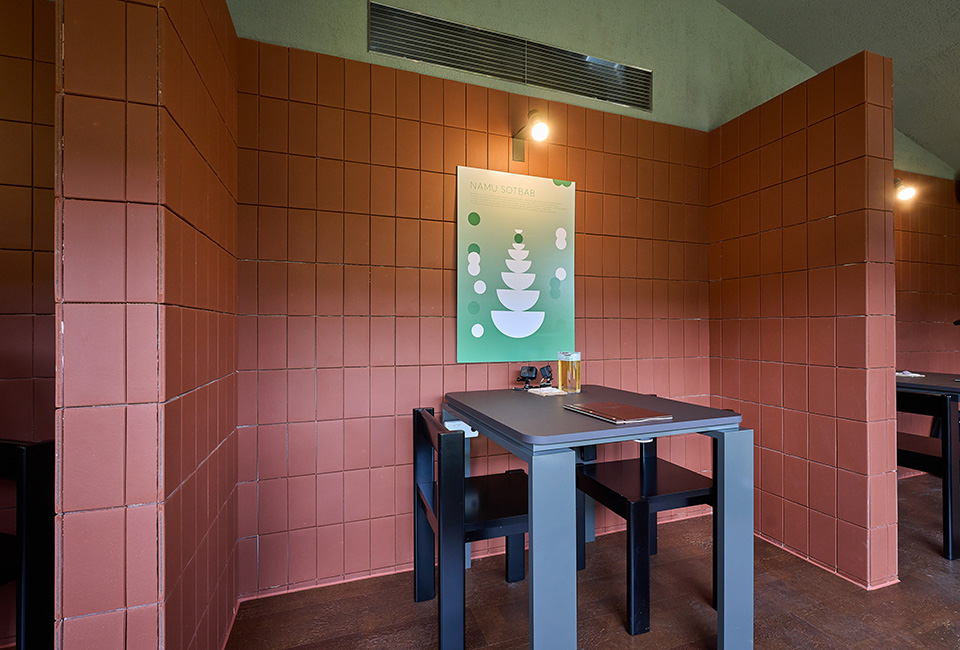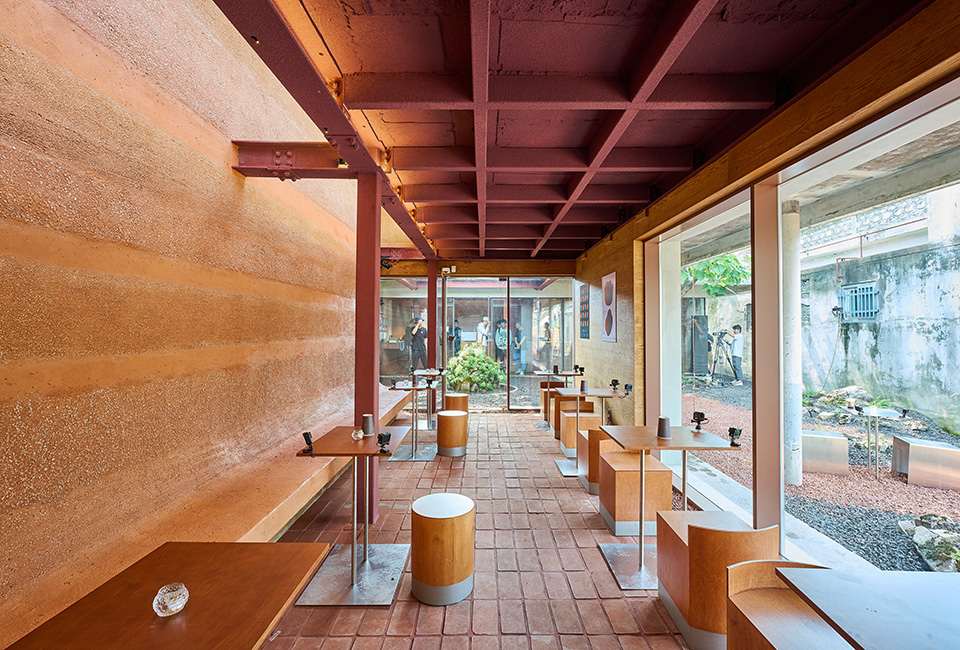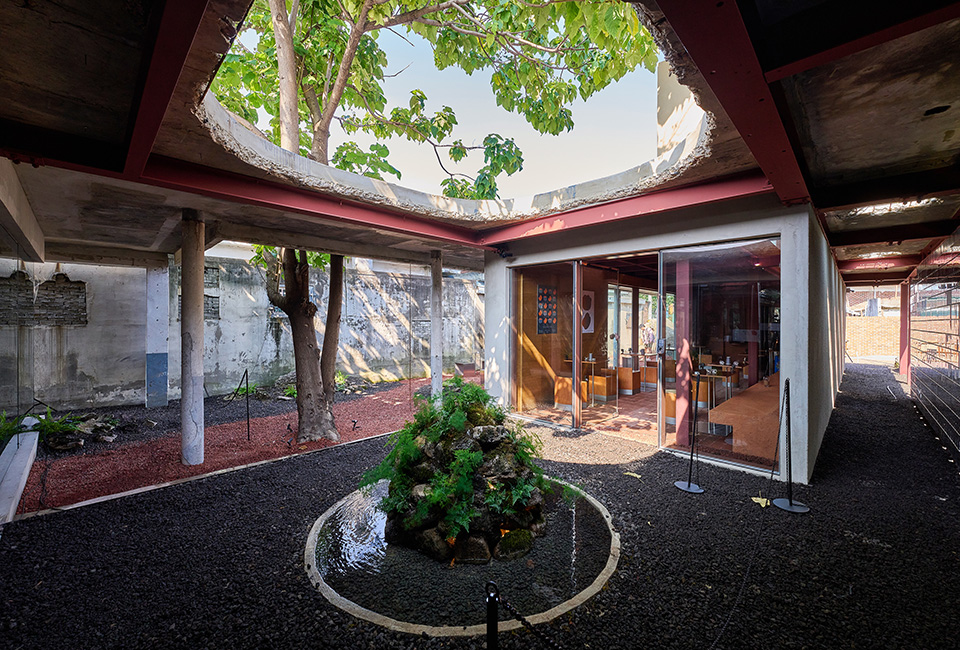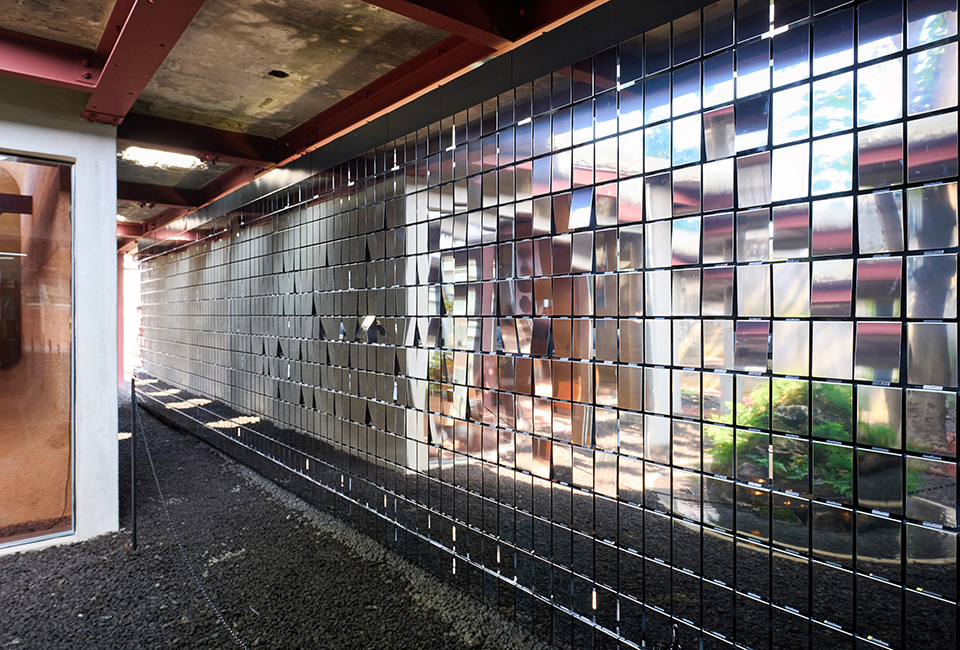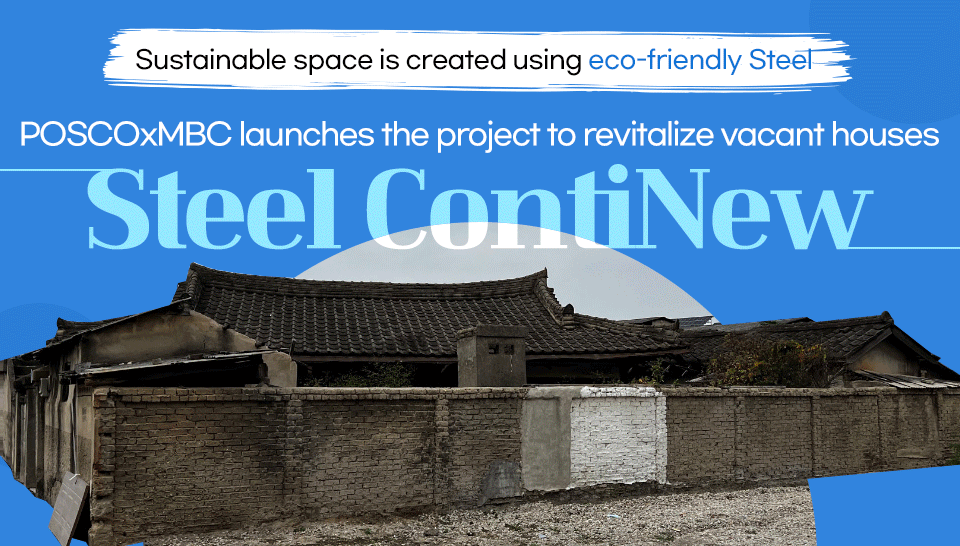
Palbok-dong is a district in Jeonju, a city rich with history and culture. In the past, Palbok-dong was bustling when the industrial complex was booming, but now many people have left the village and empty houses have been abandoned for a long time. Is there any way to repurpose the vacant houses that are still useful?
In response, POSCO has set out to promote a project to revitalize vacant houses in Jeonju based on its management philosophy of Corporate Citizenship. Steel ContiNew is a project to repurpose four abandoned houses in Palbok-dong, Jeonju into new spaces.
POSCO provided about 40 tons of steel, the main material for remodeling the empty houses, free of charge. Also, POSCO’s major client companies, including INNOVILT, participated in the project by voluntarily supporting production and construction costs.
Steel ContiNew is an innovative campaign that leverages infinitely recyclable steel to repurpose deserted rural houses into sustainable spaces such as cafes and restaurants. The title Steel ContiNew cleverly plays with the similar-sounding words ‘still’ and ‘steel’ to symbolize the ongoing transformation of contemporary steel that will persist into the future.
This project employed customizable Pos-H welded beams as a key component in the foundational structural renovations of the vacant houses. Pos-H has the advantages of superior value and seismic performance compared to other H-beams and it can be manufactured in sizes that are optimized for customer requirements.
PosMAC, renowned for its exceptional rust resistance, was utilized for the roofs and exterior facades of the buildings. With a 20-year anti-corrosion warranty, PosMAC guarantees the long-lasting durability and enduring visual charm of the structures. A “solar roof” made with PosMAC can be laid over existing roofing so mounting is accomplished without support fixtures or other additional structures, enhancing stability and environmental friendliness.
In terms of interior materials, POSCO employed stainless steel Kinetic Walls to achieve a fluid and undulating visual effect. Additionally, PosART, a high-resolution inkjet printing technique on metal, was utilized to recreate the texture of materials like wood and marble. Features such as sink countertops, tables, benches, and lighting were also made with stainless steel to optimize hygiene and emphasize the aesthetic beauty unique to steel materials.
The biggest achievement of the Steel ContiNew project is that a village that was once desolate with abandoned houses has been repurposed into vibrant spaces with the use of steel, an infinitely recyclable and Sustainable material.
This is why the project to renovate vacant houses into new spaces is recognized for effectively solving problems faced by depopulated areas such as creating jobs, attracting more visitors, and revitalizing the local economy. Looking ahead, POSCO plans to actively participate in creating social value with steel based on its management philosophy of Corporate Citizenship.

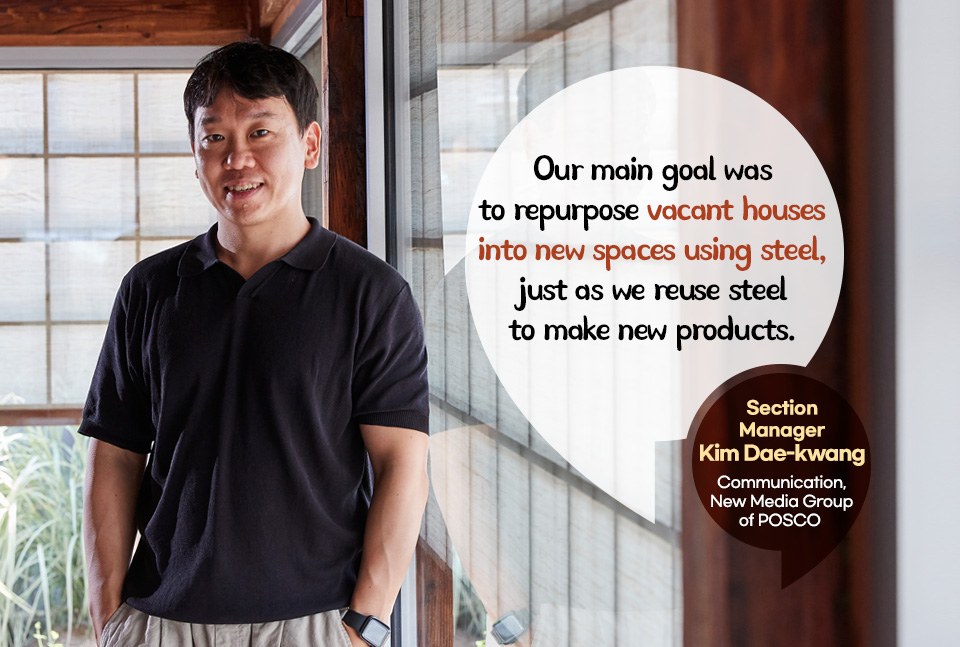
What made you participate in the Steel ContiNew project?
POSCO has been making great efforts to create social values based on its management philosophy of Corporate Citizenship. This project was also part of the management philosophy. Recently, provincial areas have been facing many problems such as an increase in vacant houses due to depopulation and regional imbalance. So, I participated in this project to contribute to solving these structural problems in society using an Sustainable material, steel.
What did you pay the most attention to while you were working on this project?
Steel is a 99% recyclable material. Our main goal was to repurpose vacant houses into new spaces using steel, just as we reuse steel to make new products. We focused on remodeling several vacant houses to refresh the entire village, while trying to solve the problems faced by depopulated areas.
Steel was rarely used for the interior and exterior material in the past. So, with this project, we focused on publicizing new aspects of steel. Steel may have a cold and hard image, but with this project, we wanted to convey a message that steel actually has both sustainability and aesthetics.
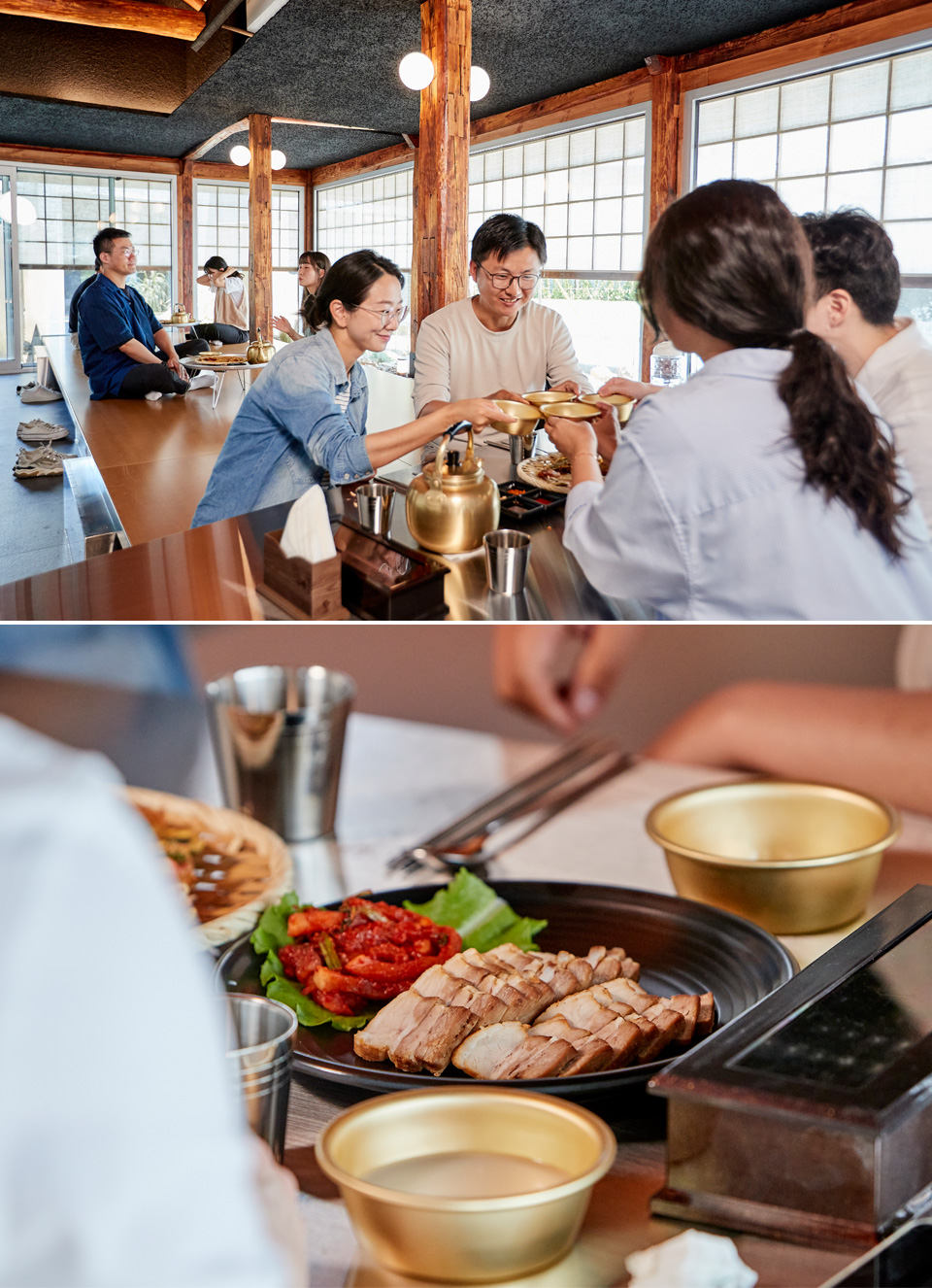
▲The remodeled space will be a fine dining restaurant with an old-fashioned tavern concept, mainly serving Bossam(boiled pork belly wraps), jeon (Korean-style pancakes) and makgeolli (traditional unrefined rice wine).
This project has been recognized for its good achievements, such as job creation and revitalization of the local economy.
If not just one, but several vacant houses are renovated, the whole village will be full of vitality. A total of four commercial facilities have created employment, and the local economy is also expected to be revitalized thanks to a surge in visitors. I feel rewarded because this project seemingly provides a way to solve common problems faced by rural communities.
What do you think about the future of this place, revitalized by POSCO?
In the past, during the industrialization of Korea, economic growth was achieved with the support of basic industries such as steel and shipbuilding. Palbok-dong also had many residents living behind the industrial complex at that time. I hope that this project will serve as an opportunity to recapture past glory, revitalize the village, and attract more visitors and ultimately revive the local economy. I look forward to the continuing interest and support of many visitors even after the broadcast.

What part of the Steel ContiNew project did you participate in?
The INNOVILT is in charge of producing construction materials with POSCO’s excellent steel. We tried to show a new side of steel by supplying materials that are different from the cold image that steel had, such as a solar roof based on the photovoltaic system, PosART that prints various materials on steel sheets, and stainless steel that can be used for kitchen utensils and lightings.
Please explain in detail about PosART, which was applied as the main interior material in this project.
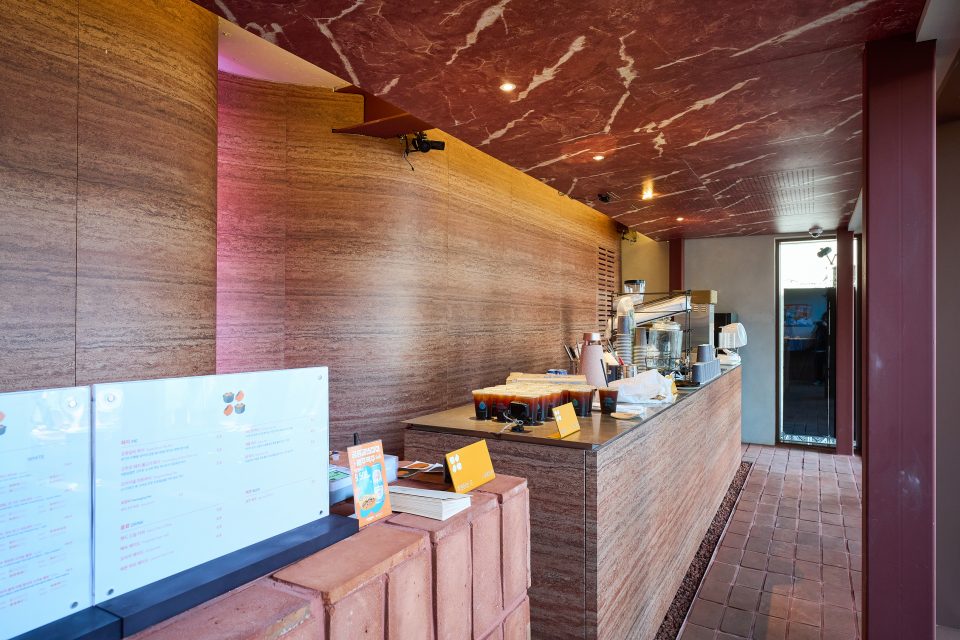
PosART is an inkjet printing technique for POSCO steel sheets that can recreate the patterns, colors, and textures of natural materials such as wood and marble. The advantage of PosART is that it can make architecture that feels natural without damaging nature, such as with logging or marble mining. In addition, it is customizable by designing the patterns desired by architects. I think this project is meaningful in that it has enhanced the public’s understanding of steel by introducing PosART, which recreates the colors and textures that architects want.
You must have been filled with emotion when you saw the vacant houses repurposed with POSCO’s technologies.
When I first visited this place, the village looked dilapidated with many vacant houses. But construction has been going on for several months, and now the whole village seems to be filled with vibrant energy. Just like the local residents who have high expectations for this project, I am also excited about and looking forward to the future of this place. We sincerely participated in this project and hope that this place will be loved well beyond a one-time event, for a long time to come.

How do you feel about participating in the project to revitalize vacant houses?
I am delighted to be able to publicize the aesthetics, eco-friendliness, and sustainability of steel through this project. Steel is all around us, but we just don’t recognize it. I hope that more people come to understand that steel, a crucial material for structuring spaces, can be utilized in a variety of aesthetically pleasing ways.

Please introduce your company, MBK.
MBK is a company that specializes in architectural exteriors such as facade construction, building assembly, consulting, and distribution of POSCO Steeleon’s products. In addition, we have contributed to the creation of a new architectural culture by participating in one-off projects conducted by architects on a pilot basis. This is why we participated in the Steel ContiNew project as an architectural exteriors company.
Please tell us about the exterior material from POSCO used in this construction.
One of the drawbacks of steel is rust. That was why it was rarely used as an exterior material in the past. However, the corrosion rate of steel has stabilized, so it is now widely used as an exterior material. It means that technology moves on. I think the biggest advantage of POSCO products is not only the excellent performance of steel, but also the ability to realize the patterns and designs desired by architects.
It seemed that the remodeled house was in perfect harmony with the hanok and the metal-like exterior building materials. What did you pay attention to the most?
House No. 4, which we were involved in, focused on preserving the peculiar atmosphere of the existing *hanok. We maintained the old wall on the outside of the building while trying to make it blend in naturally with the exterior materials.
*hanok: A type of traditional Korean house first designed and built in the 14th century during the Joseon Dynasty.
In addition, we put a lot of effort into ensuring that the architect’s intentions are well reflected in the work. After conducting several tests to realize metallic printed steel sheets with the hairline texture that the architect wanted, we finally achieved great results that everyone was happy with. I am glad that the architect’s intentions are properly reflected in the finished house.

▲ The old wall surrounding the building blends naturally with the hanok.
How do you feel about participating in this project?
It is said that there are many vacant houses due to rural depopulation. I think it is a big social problem. So, I feel pleased and rewarded that I have done my little bit and helped to solve social problems. In addition, as one of the people involved in this project, I expect that the broadcast will make the image of steel more friendly. I hope more people will be aware of the sustainability and diversity of steel in the future.


